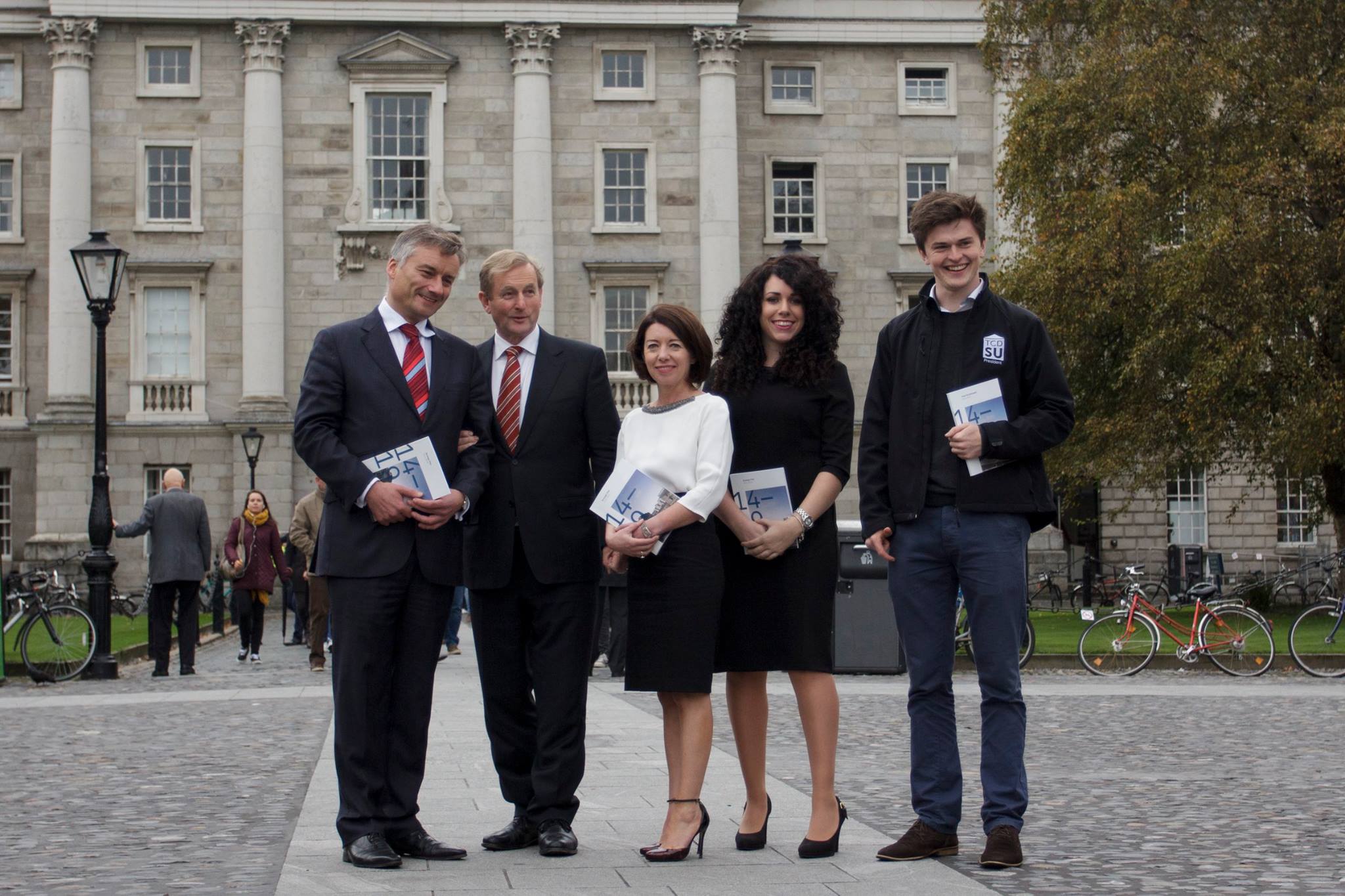
Speaking in the Examination Hall this afternoon, the provost welcomed Kenny to Trinity and the renewed debate on the future of higher education in Ireland, mentioning Trinity’s fall in international rankings as having “served to put national focus on the [issue]”.
He continued by outlining the Strategic Plan’s key elements, including proposals to increase private sector investment and double the number of international students.
Subject to planning permission, College has pledged to build a €150 million state-of-the-art building for the study of the environment, engineering and energy issues, dubbed “E3”.
Further building work will include a €75 million cancer research and care institute in conjunction with St. James’ Hospital, described by Prendergast as “an unparalleled opportunity.”
In addition, €70 million is to be spent building a Trinity Business School, backing onto Pearse Street, in order to “expand education through entrepreneurship”.
2,000 extra accommodation places are set to be built for students, including a student hall at Oisin House.
College also plans to increase the number of underrepresented groups enrolled on undergraduate courses to 25% by 2019. It hopes to improve rates of undergraduate transition from first to second year courses from 84% in 2012 to 90% in 2019.
Technology-enhanced education is emphasised through a new five-year Online Education Project that aims to increase the number of student online learners to 1,000 on up to 20 courses and create “global-learning communities” through open online courses (MOOCs).
Industry links are promoted by a dedicated Innovation and Entrepreneurship Strategy that will develop College’s Office of Corporate Partnership and Knowledge Exchange, and double direct research funding by raising €20m from industry partners.
College aims to be ranked in the top 100 world in at least one major university ranking by 2019.
Despite being mentioned in the report, College’s plan to tackle a “global research question” such as climate change or youth unemployment was not referred to.
The plan also envisages a further reliance on private sector investment over the next five years. Whereas state support currently accounts for 49% of Trinity’s annual income of €300 million, it is hoped that increases in private fundraising will reduce this to 40%.
In an interview published in The Irish Times this morning, the provost insisted the College was “not going to stop arguing for public investment in education but with all the pressures on the exchequer it would not be prudent to design a plan assuming increases in public funding.”
With this in mind, College also sets out to double the number of non-EU students from 7.8% in 2012 to 18% by 2019.
Speaking at the launch, An Taoiseach Enda Kenny praised Trinity’s “leadership, resilience and vision” which he said were the hallmarks of the Strategic Plan.
The plan, he said, would be “an important element of the government’s strategy for higher education till 2030.”
He thanked College for what he called “the opportunity for a realistic debate” on third-level education and highlighted the contribution of students from abroad, which he argued were “so valuable to Trinity’s standing internationally.”
The launch finished with the provost gifting the taoiseach with a copy of the Down Survey, dating back to circa 1659, reputedly the earliest ever map of County Mayo.
Speaking to Trinity News on his way out, the taoiseach said that TCD was “even better placed in the next five years” to meet the challenges of the future.
Additional reporting by Catherine Healy.
Photography by Kevin O’Rourke.






